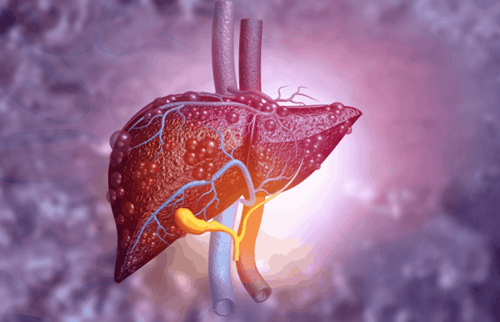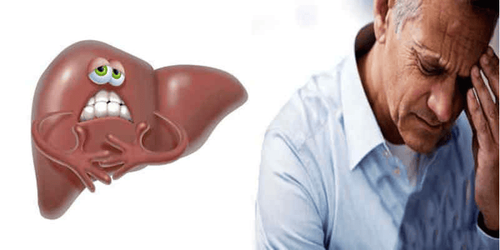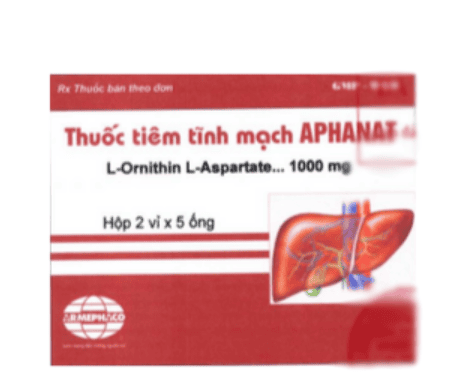This is an automatically translated article.
This article is professionally consulted by Dr., Dr. Tran Nhu Tu - Dean and Master, Doctor Lam Thi Kim Chi - Department of Diagnostic Imaging - Vinmec Danang International HospitalAbdominal ultrasound uses sound waves to create images of the organs inside the abdomen including the liver. This technique is used to help diagnose problems with the liver and other organs in the abdomen.
1. When to perform liver ultrasound?
The doctor will appoint an ultrasound to find the cause of the disease if the patient has signs and symptoms of liver disease such as:
Yellowing of the skin and eyes Abdominal pain Swollen feet and ankles Itching skin Dark urine color
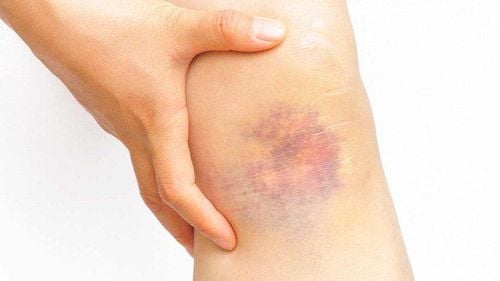
Người bệnh dễ bị bầm tím
Pale or bloody or tarry stools Prolonged fatigue Nausea or vomiting Loss of appetite Easy bruising
Trắc nghiệm: Làm thế nào để bảo vệ lá gan khỏe mạnh?
Làm test trắc nghiệm kiểm tra hiểu biết về gan có thể giúp bạn nhận thức rõ vai trò quan trọng của gan, từ đó có các biện pháp bảo vệ gan để phòng ngừa bệnh tật.2. Liver ultrasound detects what diseases?
To diagnose liver diseases, doctors will use many different diagnostic techniques to confirm whether the patient has liver disease or not. In addition, when combining diagnostic techniques such as: blood tests, fluid tests, imaging techniques (ultrasound, X-ray or MRI, CT scan) the doctor will come up with a plan. therapy tailored to each patient. Ultrasound uses sound waves to create images to evaluate the size and shape of the liver, as well as blood flow through the liver.
2.1 Fatty liver On ultrasound image, fatty liver looks brighter than normal liver and cirrhosis will look rough and shrunken.
2.2 Liver cancer Liver cancer ; The most common type of liver cancer is hepatocellular carcinoma.
2.3 Autoimmune hepatitis Autoimmune hepatitis ; This condition is caused by the patient's own immune system attacking the liver, leading to inflammation. If left untreated, it can lead to cirrhosis and liver failure.
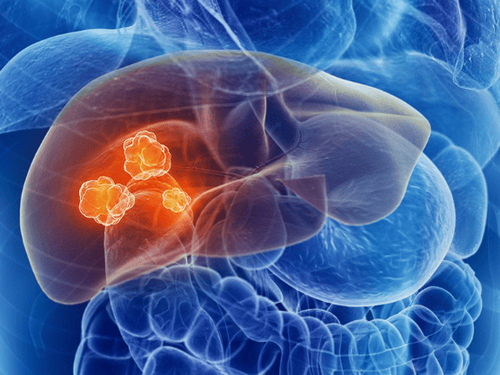
Siêu âm giúp phát hiện bất thường tại gan
2.4 Primary Cirrhosis (PBC) This disease leads to damage to the bile ducts in the liver, causing fluid accumulation and eventually leading to cirrhosis and liver failure.
2.5 Primary biliary fibrosis This inflammation causes gradual damage to the bile duct and eventually the bile duct is blocked, causing bile to accumulate in the liver. Eventually this pathology leads to cirrhosis or liver failure.
2.6 Chronic liver failure Chronic liver failure usually occurs when a large part of the liver has been damaged and cannot function properly. Usually, liver failure is caused by pre-existing liver disease and cirrhosis that occurs over a long period of time.
2.7 Liver tumors: adenomas, focal nodular hypertrophy, hemangiomas... 2.8 Gallstones Intrahepatic cholelithiasis, cholelithiasis, OMC stones causing dilation of the intrahepatic and extrahepatic biliary tract
2.9 Inflammation of the gallbladder biliary tract, gallbladder polyps Acute and chronic cholecystitis.
2.10. Cholangiocarcinoma
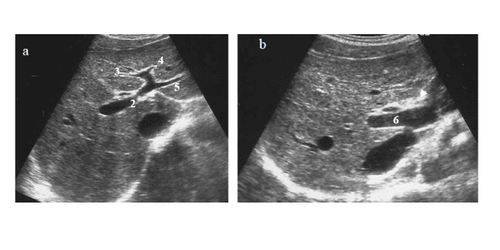
Hình ảnh kết quả siêu âm gan
3. Notes on liver ultrasound
Before performing the ultrasound, the patient may need to follow the instructions of the medical staff to help improve the quality of the images when the doctor performs the ultrasound such as:
Drink water and do not go to the toilet for until after completing the ultrasound Do not eat or drink 6 hours before the ultrasound The health care provider may ask the patient to remove some clothing and put on a hospital gown. Patients should wear loose fitting clothes during the ultrasound. Also, since you may be asked to remove your jewelry during the ultrasound, it's best to leave valuables at home. In some cases, you may also be given an injection of a harmless substance called a contrast agent before the scan, as this can make the image clearer.

Người bệnh được chỉ định uống nước trước khi siêu âm
MORE:
Fibroscan ultrasound to determine liver tissue elasticity Ultrasound of liver tissue elasticity - a technique to help evaluate modern cirrhosis Correctly understand fatty liver results on ultrasound






